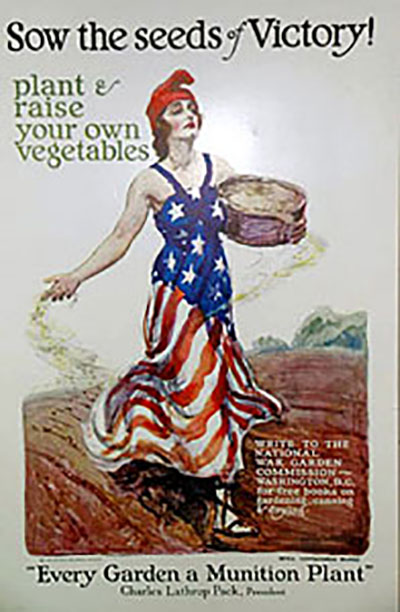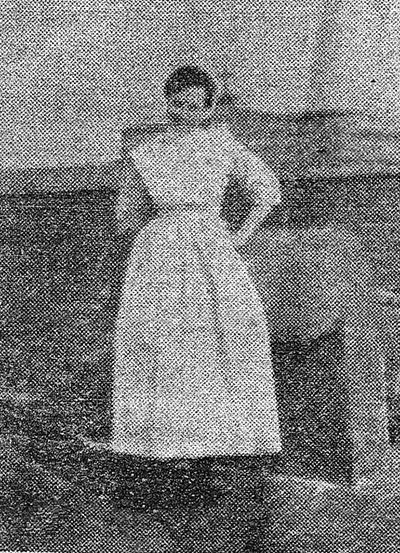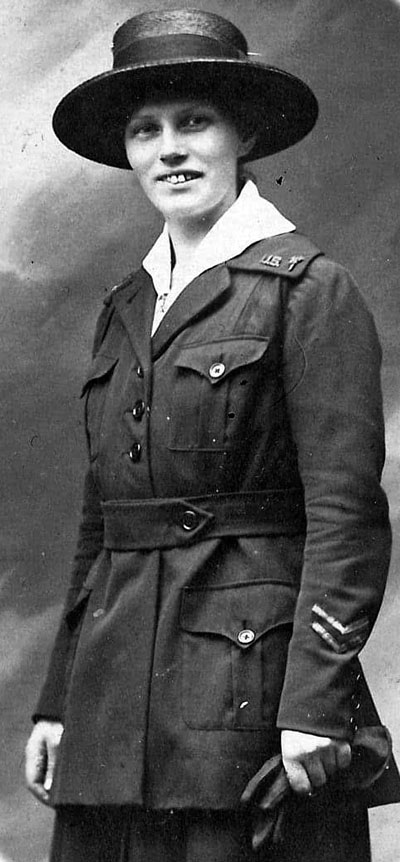|
|
||||||||||||
 |
 |
|
Wolcott Historical Society News - May 2020 By Florence Goodman As I thought about a historical event that I might share with my readers this month, my mind was overwhelmed with this Coronavirus pandemic; it was changing the history of our world, our country our state and our town. I wondered how Wolcott residents living during that time period from March 1917 through December 1920 dealt with two historic issues; soldiers leaving town to fight in WWI as well as those at home dealing with the Spanish flu epidemic.
My daily check-in on Face Book connected me to an interesting post from Debra Wilson about her aunt, Isabelle Wilson a WWI Army nurse from Wolcott. This caught my attention because I had written about Isabelle in 2017 and knew she had enlisted on June 18, 1917 in the Army Nurse Corps, Regular Army. She spent ten days at Ellis Island before embarking for Liverpool, England and arriving on July 9, 1917. From Liverpool she went to London and then onto France to serve in the #5 Harvard Unit in Camier, France. She was transferred in November 1917 to Boulogne, France to Casino Hospital, also called Harvard #5 and remained there until February 1919. What I did not realize until Debra's Face Book post was that Isabelle had been taking care of Spanish flu victims in those military hospitals in Europe during that time. I now have even more respect for Isabelle who did return home and worked as a public health nurse in Waterbury after the war.
Isabelle Wilson was not the only nurse in the area to work in a military hospital during the Spanish flu epidemic. There were two other military nurses who served, but in the process of trying to save others, they lost their lives to the Spanish flu. Miss Hazel Foster from the Bucks Hill section of Waterbury was serving as a Red Cross nurse at Camp Mills, Mineola, L.I. when she contracted the virus. Miss Foster died in October of 1918 and was buried in the Bucks Hill Cemetery. Miss Mary C. Gormley was also serving as a Red Cross nurse caring for influenza victims in Waterbury when she contracted the virus and died in October 1918; she was buried in new St. Joseph's Cemetery. Both Hazel and Mary were buried with full military honors. Lastly, one other person from the area who died from the Spanish flu during this time was my grandmother, Bommina Marino who also died in October of 1918 and is buried in Calvary Cemetery. Who would have thought that one hundred years later we would be living through another pandemic and watching friends and family suffer through it?
My mind continually wanders when I'm trying to decide on an idea to share and as I listened to daily news reports I heard mention that people in their fear of how long this pandemic might last were concerned about their food supply. This has caused people throughout the country to begin growing their own food. Again they referenced back to WWI and WWII victory gardens and how gardening was a way to help the war effort, but also a necessary way to put food on the table during those wars. Gardening is my passion and I had some knowledge of victory gardens, but I never really thought about the history behind such gardens. The definition of a victory garden is a vegetable garden, especially a home garden, planted to increase food production during a war. These gardens were also known as war gardens or food gardens for defense.
Much of Europe's farmlands were turned into battlefields during WWI and the farmers who worked these lands were now enlisted in the military; thus these countries suffered a severe food shortage. The people of Europe were starving and it was the United States that came to the rescue just before entering the war in March of 1917. The National War Garden Commission was established to encourage Americans to help with the war effort through the "war garden movement." Posters were placed all over our country encouraging civilians to "Sow the seeds of victory" by planting gardens on all land that was not already used for agriculture. Help was provided for amateur gardeners through pamphlets on how, when and where to grow. Thus gardens were started in backyards, front yards, parks, school playgrounds and business establishments. This project proved to be so successful that the government then started teaching these newfound farmers how to can, dry and preserve their surplus crops. The federal Bureau of Education established a U.S. School Garden Army (USSGA) to encourage children to enlist as "soldiers of the soil" to teach them how to grow a vegetable garden. The end result was amazing; by the close of 1917, three million new gardens were planted and by the end of 1918, the number had increased to over five million. When the war came to an end these gardens were now referred to as "victory gardens" and although the demand had ended many Americans continued to maintain their gardens.
The same effort proved helpful during WWII when victory gardens remerged. Commercial crops were being sent overseas to feed our military and the transportation that originally was transporting food was now transporting troops. In the spring of 1942 Americans were introduced to food rationing, which now gave them even more incentive to grow their own food. So again gardens cropped up, no pun intended, in any available space that had good soil. First Lady, Eleanor Roosevelt even planted a victory garden on the White House lawn.
Victory gardens served several purposes for the civilians back home throughout both WWI and WWII. These gardens gave them a way to help with the war effort at home; it created patriotism, boosted morale and put food on their tables. Fifteen million families planted victory gardens in 1942 and by 1944 these gardens were producing eight million tons of food. Once again when the war ended so too did many of these gardens, but there were still those Americans who realized the importance of growing a garden for healthy eating, self-reliance and sustainability so those gardens continued to produce.
Fast forward to March 2020 and once again we are seeing a resurgence of home gardening. Seed companies have seen a huge increase in seed sales, which may be caused from fear of the food supply decreasing or just the fact that so many people are bored because of quarantines and social distancing. Whatever the cause people need to get outside and feel productive and this is the perfect way to do so.
(Information for this article was taken from Debra Wilson's Face Book post, April 2020; an article in the Wolcott News, 10/2017 by Florence Goodman;"America's Patriotic Victory Gardens"- HISTORY, 8.31.2018 by Laura Schumm: https://www.history.com/news/americas-patriotic-victory-gardens; National Garden Commission Poster, "Sow the Seeds" https://www.history.nd.gov/exhibits/gardening/militaryevents9.html; "Victory Gardens Today" by Nan Fischer, www.naturespath.com/en-us/blog/victory-gardens-now/ ; Minnesota Historical Society Poster-"War Gardens"and https://en.wikipedia.org/wiki/Victory_garden, "American WWII poster; Waterbury paper obituaries, October 4 and 11, 1918 taken from the Homewood Scrapbook Collection with help from Elaine Homewood Martinelli)
WWII Victory Garden poster.
WWI National War Garden Poster.
Miss Hazel Foster, Red Cross nurse.(Waterbury newspaper photo 1918).
Isabelle Wilson, the WWI Army Nurse Corps, Regular Army. (Photo compliments of Debra Wilson).
To view past installments of the Historical Society News, click here. |
|
|
[Home]
[News]
[Purpose]
[Calendar]
[Museum]
[Membership]
[History]
[Contacts]
[Links]
All material at Wolcott Historical Society Web sites Copyright © 2000-2020 Wolcott Historical Society |



